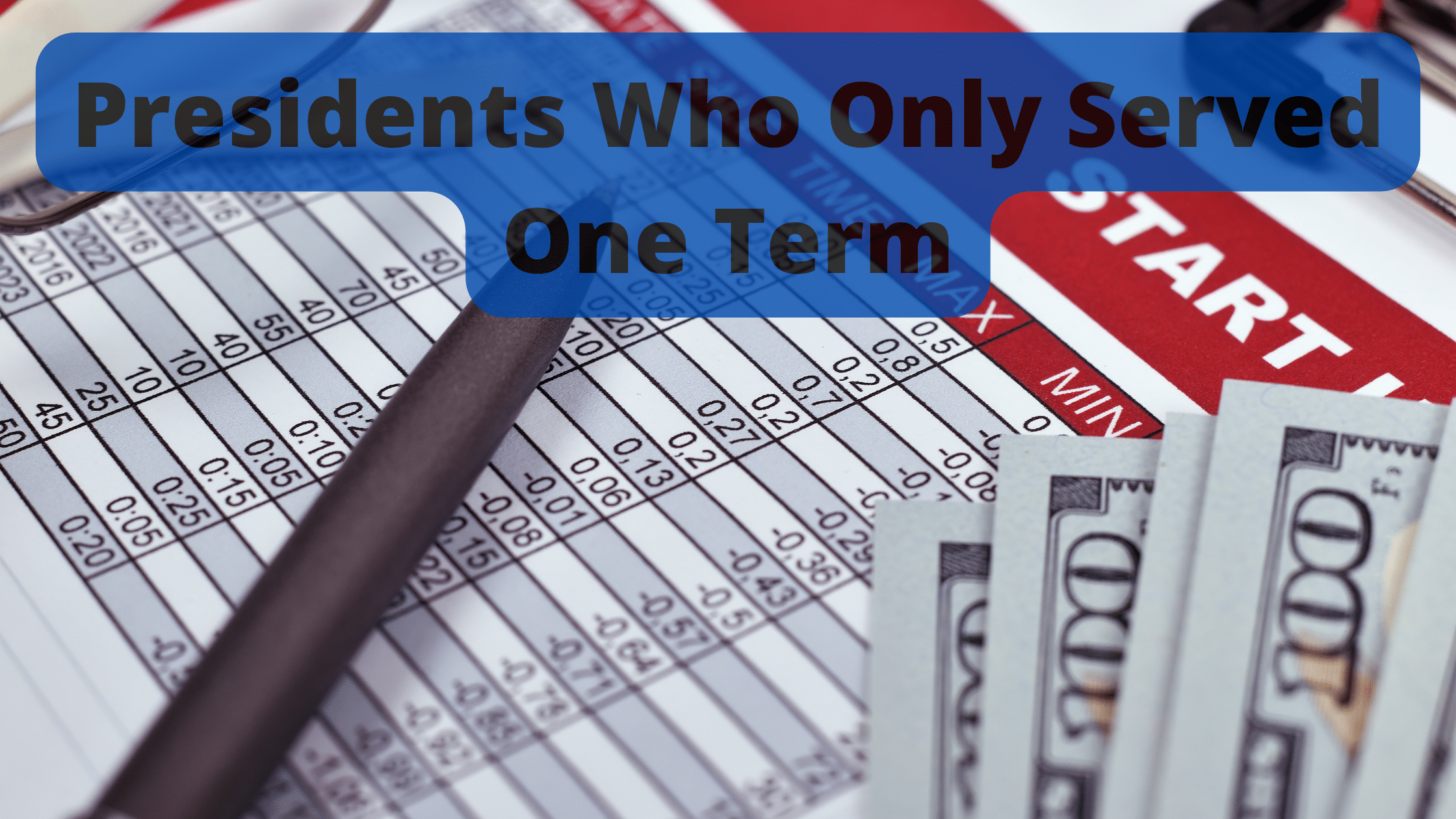Table of Contents
ToggleAccording to the United States Constitution, presidents are only allowed to serve two terms. However, for various reasons, some presidents only serve one term.
How many presidents only served one term?
13 presidents have only served one term as president.
How many presidents served only one term?
The United States has had 47 different presidents during its history, many of whom had successful administrations over multiple terms.
However, many presidents have only served one term in office for various reasons, including poor leadership, unfulfilled campaign promises, or political opposition.
Thirteen presidents have only served one term in the White House. Therefore, they are known as single-term presidents.
One Term Presidents List
- John Adams
- John Quincy Adams
- Martin Van Buren
- James K Polk
- Franklin Pierce
- James Buchanan
- Rutherford B Hayes
- Benjamin Harrison
- William Taft
- Herbert Hoover
- Jimmy Carter
- George HW Bush
- Joe Biden
John Adams
John Adams, the 2nd President of the United States, had the unenviable position of following George Washington‘s administration. Although he served two terms as vice president under Washington and was one of the most influential Founding Fathers, Adams was unable to reach the popularity of Washington and didn’t serve a second term.
He lost reelection to Thomas Jefferson for various reasons, including the controversial Alien and Sedition Acts, the Direct Tax of 1798, and deep internal division within the Federalist Party.
John Quincy Adams
The son of John Adams, John Quincy Adams was the 6th President of the United States, the culmination of a brilliant political career that saw him serve as a senator, representative, and secretary of state.
Adams pursued an active domestic agenda focused on significant federal investment in infrastructure, a radical idea at the time that was very unpopular. As a result, he lost reelection to Andrew Jackson, who capitalized on the unpopularity of Adams and growing resentment of the elite political class that Adams was associated with.
Martin Van Buren
Martin Van Buren was elected as the 8th President of the United States after serving previously as vice president under Andrew Jackson. His administration quickly became unpopular the first year of his presidency, handling the Panic of 1837 advocating an independent treasury. His handling of the Second Seminole War further eroded his influence and resulted in him losing re-election to William Henry Harrison.
James K. Polk
James K. Polk is one of the most underrated presidents in American history, serving as the country’s 11th president. His administration oversaw impressive territorial growth due to the annexation of Texas and the defeat of Mexico in the Mexican-American War. Yet, Polk stood by his campaign promise during the election of 1844 to not serve a second term as president.
Franklin Pierce
Serving as the nation’s 14th president, Franklin Pierce was a staunch opponent of the abolitionist movement. His most notable actions were signing the controversial Kansas-Nebraska Act of 1854 and strongly enforcing the Fugitive Slave Act. Unfortunately, Pierce’s presidential career ended when he failed to receive his party’s nomination for reelection, the only time in American history that a sitting president wasn’t renominated by his political party.
James Buchanan
Directly following Franklin Pierce as the 15th president in the United States, James Buchanan is widely considered one of the worst presidents in American history. He did nothing to alleviate tensions between northern and southern states and was involved in numerous corruption scandals. Nevertheless, Buchanan honored his campaign pledge to only serve one term as president in the White House.
Rutherford B. Hayes
Rutherford B. Hayes was elected as 19th President of the United States in the closest presidential election in history, narrowly defeating Samuel J. Tilden by one electoral vote. Hayes is most noted for ending Reconstruction in the southern states as a part of a deal with Democrats not to contest his close election victory. In addition, he honored his pledge only to serve one presidential term in the White House.
Benjamin Harrison
Benjamin Harrison is one of the least known presidents in US history, serving as the country’s 23rd president. Harrison helped enact significant economic legislation, including the McKinley Tariff and Sherman Antitrust Act. However, he lost reelection to Grover Cleveland, who he had beaten in the previous presidential election.
Grover Cleveland is the only president that has served two non-consecutive terms. Between his first and second term, Benjamin Harrison was president.
William Taft
William Taft served as the 27th president in American history and is the only individual to ever serve as president and chief justice of the Supreme Court. Most of his presidency was marked by conflict between the conservative and progressive wings of the Republican Party, which he failed to manage effectively. Taft lost reelection to Woodrow Wilson, mainly due to Theodore Roosevelt running as a 3rd party candidate.

Get Smarter on US News, History, and the Constitution
Join the thousands of fellow patriots who rely on our 5-minute newsletter to stay informed on the key events and trends that shaped our nation's past and continue to shape its present.
Herbert Hoover
As the nation’s 31st president, Herbert Hoover was quickly confronted with the Great Depression, the worst economic disaster in American history. His inability to effectively alleviate the economic crisis resulted in his sound reelection defeat to Franklin Roosevelt.
Jimmy Carter
Jimmy Carter, the 39th US president, is widely regarded as one of the worst presidents in American history. He quickly proved unable to handle many domestic and foreign problems, including energy shortages, inflation, and the Iran hostage crisis. His failed administration was beaten soundly by Ronald Reagan in the election of 1980.
George H.W. Bush
George H.W. Bush was easily elected as the nation’s 41st president, mainly due to his position as vice president under Reagan. However, although he enjoyed some popularity stemming from his successful oversight of the Gulf War, economic difficulty resulting from inflation doomed his reelection bid against Bill Clinton.
Joe Biden
Joe Biden was the last president to serve only one term.












